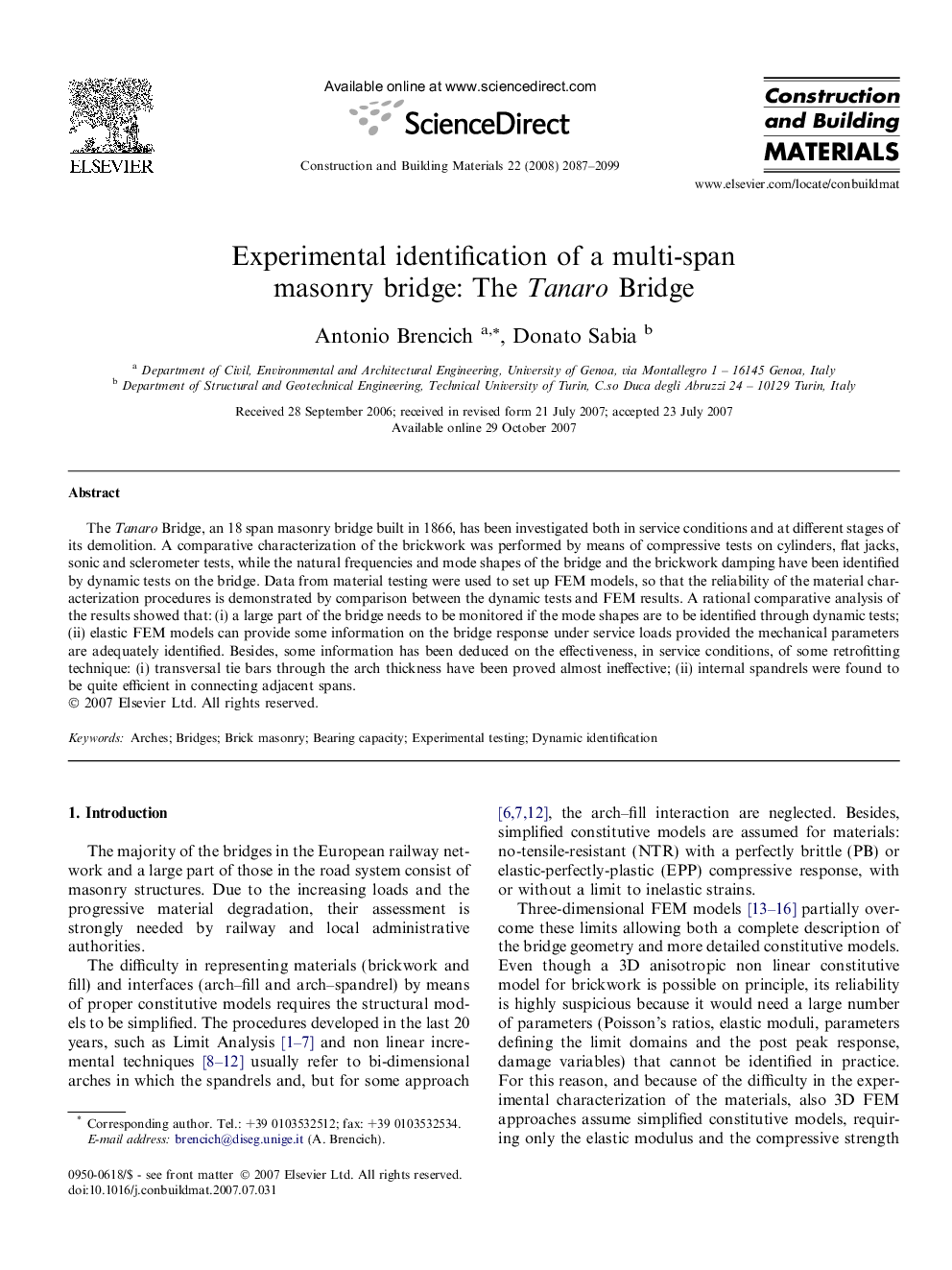| Article ID | Journal | Published Year | Pages | File Type |
|---|---|---|---|---|
| 261123 | Construction and Building Materials | 2008 | 13 Pages |
The Tanaro Bridge, an 18 span masonry bridge built in 1866, has been investigated both in service conditions and at different stages of its demolition. A comparative characterization of the brickwork was performed by means of compressive tests on cylinders, flat jacks, sonic and sclerometer tests, while the natural frequencies and mode shapes of the bridge and the brickwork damping have been identified by dynamic tests on the bridge. Data from material testing were used to set up FEM models, so that the reliability of the material characterization procedures is demonstrated by comparison between the dynamic tests and FEM results. A rational comparative analysis of the results showed that: (i) a large part of the bridge needs to be monitored if the mode shapes are to be identified through dynamic tests; (ii) elastic FEM models can provide some information on the bridge response under service loads provided the mechanical parameters are adequately identified. Besides, some information has been deduced on the effectiveness, in service conditions, of some retrofitting technique: (i) transversal tie bars through the arch thickness have been proved almost ineffective; (ii) internal spandrels were found to be quite efficient in connecting adjacent spans.
